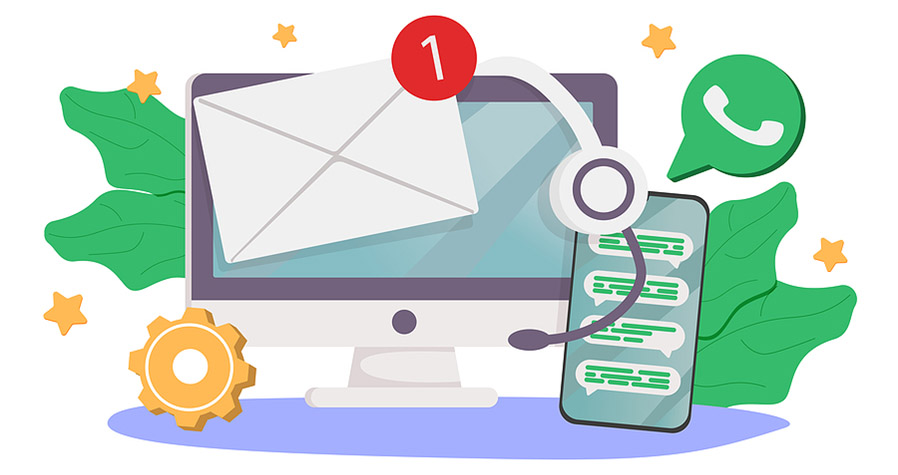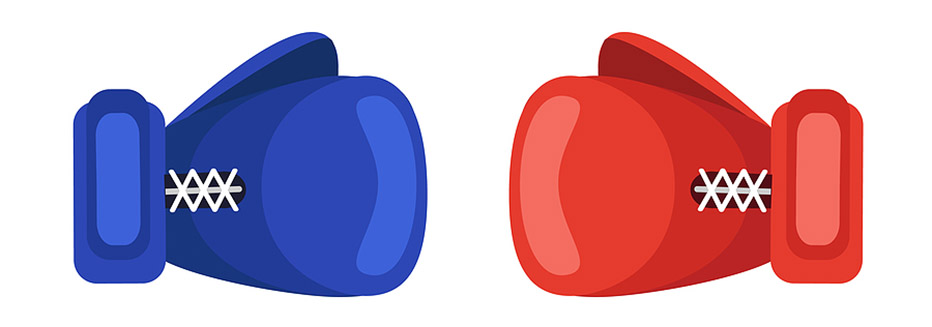Written by Sean McPheat | 

Inside sales has really taken off in the past few years. In part because of the COVID-19 pandemic, and it’s become a big deal in the business world – giving traditional selling methods a serious run for their money!
Just take a look at the numbers according to Statista, between 2016 and 2021, global ecommerce grew at a breakneck speed of 21.93% per year. And it didn’t stop there! Experts were predicting the trend to speed up even more, with the global ecommerce market ballooning from $4.94 trillion in 2021 to a whopping $7.39 trillion by 2025.
In this article we’ll ask what inside sales is and what makes it different from other kinds of selling. We’ll also look at some of the pros and cons.
But first things first – we started off with a simple definition. Let’s get to it!
Contents
Inside sales is simply any sales activity conducted remotely, rather than in the field. Rather than reps travelling to meet potential clients, inside sales reps work from offices, or from home, using a range of remote communication methods including phone calls, emails, text messages and social media contacts to open a sales pipeline and drive conversions.
While it has traditionally been the case that inside sales teams would work from large, localised offices, benefitting from economies of scale, the pandemic accelerated a trend towards increased home working, which has both advantages and disadvantages.
In both circumstances, software is used to monitor sales rep performance and the volume of contacts made. By using CRM platforms that collate customer contacts, lead qualification tools and sales analytic tools, even remote working inside sales teams remain motivated by concrete targets and performance expectations.

Cold calling is still a part of inside sales, but it’s not necessarily a major part of it. Sales leads are generated from a range of sources:
• Bought in leads from third party suppliers.
• Leads researched from LinkedIn and other resources (B2B).
• Inbound leads from enquiries and mailing lists.
• Cold-called leads which are then qualified.
• Cold-contact leads via email / text / social media/social selling.
There are typically two types of inside sales reps, which handle lead generation differently:
Sales Development Reps (SDRs) work largely with “warm leads”, often from potential customers who have performed some qualifying action online. For instance, they have completed a form to download a whitepaper, asked for a online sales demo, or signed up for a newsletter. SDRs might also draw upon leads passed to them by Business Development Reps (BDRs).
BDRs are the true cold callers, often working from market research insights or other intelligence to narrow down a range of potential leads to call, email, or message. Sometimes these initial cold calls are kept deliberately short, with the intention of scheduling a later call at a time more convenient to the recipient. The follow-up call may then be handled by an SDR.
Aside from these early stages of lead generation and qualification, and particularly in B2B and SaaS sales, inside sellers spend much of their time in follow up contacts. It’s been shown that over 50% of deals are clinched after five or more follow ups.
Sales reps therefore spend much of their time sending follow-up emails with product information, handling prospect queries, or calling back to chase a sale. The right balance of persistence and restraint must be struck. Good reps develop the skills of discerning when’s the right moment to push for a sale, and when its preferable to step back to give the buyer consideration time.

There are quite a few differences between inside and outside sales. Let’s look at a direct comparison between the two types of selling.
Because travel is involved in outside sales, this type of sales can be costly, and it is harder for businesses to quickly scale up their workforce. Outside sales reps will usually handle a smaller volume of potential clients, whereas inside sales reps benefit from economies of scale, automation, and analytics.

Companies have discovered a whole host of benefits to adopting an inside sales approach.
Here are just a few of them:
1. Cost savings: Co-locating a sales team in one building, or even managing a hybrid network of in-office and remote workers, provides many economies of scale. A higher volume of contacts can be handled per day, and expenses are minimal.
2. Time savings: For outside sales reps, time lost in travel is a significant obstacle to increased sales. Even those who can catch up on admin while travelling must necessarily lose face to face contact time. The increased automation available to inside sales teams provide further time savings.
3. Onboarding: It’s easier and quicker to train new reps from a centralised office where teams can on-boarded in cohorts. Even when working remotely, e-learning systems such as SmarterU can be used to train and assess new staff. Vitally, its easier to monitor consistency of approach when all reps are under the same roof or working from the same playbook.
4. Greater Agility: As new information comes in from customer service teams, it’s easier and quicker to adjust sales scripts, retool the product offering and adopt new strategies. Automation means that targets can be adjusted according to shifting patterns of demand and market realities.
5. Better Analytics: Inside sales teams benefit from fully integrated tech stacks including lead distribution automation (to ensure a fair sharing of qualified prospects), CRM systems, dialing systems and real-time analytics. Individual reps are prompted to do follow-ups at scheduled times and kept appraised of their performance constantly.
6. Managerial Oversight: It’s much easier to manage a sales team when they are working in the same building, or at least, working with the same software systems. Managers can access dashboards showing team and individual performance, revenue projections, churn rates and much more.
7. Technology: There’s a huge range of resources available to inside sales teams, all of which can be integrated to create smooth and hyper-efficient workflows. Analytics report back to senior stakeholders, and sales data can be funneled back to marketing teams to help shape future strategy.
While there are some items that require face-to-face contact, such as medical equipment which requires demonstration, or high-ticket items which need a VIP approach, in many respects inside selling conveys huge advantages, regardless of what you’re selling.
There are a range of skills salespeople can hone which will stand them in good stead in inside sales. These include:
1. Listening and Adapting: Since you don’t have the full range of body language and facial signals at your disposal, even with the best broadband Zoom connection, learning to listen is key. It’s well-established that the first thing you need to do is find out what problem your potential customer would like to solve, and what concerns they have.
This does not mean you can’t subtly direct the conversation, but you need to spend a significant amount of time listening to concerns and formulating strategies to address them.
2. Rapport Building: Given the lack of direct contact and the average number of points of contact before a deal can be struck, it’s important to build rapport. Taking sufficient notes on the individual concerns and qualities of each lead will help you snap back into the right mode each time.
Being natural and approachable is key, and not letting people feel they are being led to a sale at all costs. You may sometimes have to cut your losses, but a rapport-based strategy pays dividends, particularly when you sell the perfect SaaS solution to the perfect client, and that all-important subscription revenue comes in.
3. Consistency: Fortunately, there are a range of tech tools at your disposal, including sophisticated CRMs and even AI-assistants to prompt you to return calls, supply sales material or reply to specific queries. Consistency of approach across all clients, and across all team members is vital. Learn to follow the rubric to the nth degree and you’ll become an invaluable addition to the team.
4. Positive Attitude: When regular knock backs are experienced, as will inevitably happen on bad days, it’s beneficial to develop a positive attitude and have a positive sales mindset. Every day becomes a new opportunity to start with a blank slate and improve on yesterday’s performance.
As inside sales involves a greater number of calls and encounters per day, it can be easy to become demoralised when the chips seem stacked against you. However, with the right attitude, the larger volume of leads also translates into more opportunities to shine.

Inside sales is certainly a challenging job, particularly if you are selling big ticket items to the public. B2B sales generally prove a little easier than B2C, but you’ll still be expected to hit a sales target, or at least a calls target, each week. Fall short too frequently and you may not last long within the company.
That said, good B2B sales managers promote team performance over individual scores.
Looking to become a better Sales Manager? Check out our Sales Management Training.
As in any sales position, beginners are not expected to match the star salespeople. While it is anticipated that you’ll get up to speed quickly, there is usually sales strategy training, product familiarity sessions, tech support webinars and other primers to help you learn the ropes. Nobody becomes a star salesperson overnight, and study delivers success.
The five biggest inside sales challenges, as reported by LeadSquared are:
1. Target Pressure (reported by 41% of survey respondents): This is an understandable concern, and to the right personality, it can act as impetus to achieve targets, rather than feel like an overwhelming burden. A lot will depend on the style of management. Some B2C businesses have only team sales targets, but that doesn’t mean individuals who are failing to contribute won’t be noticed.
2. Work-Life Balance (32%): Long hours have been reported by some salespeople, and the situation can be exacerbated when working from home or in a hybrid working model. Since bonuses are often paid out for exceptional performance, there can be an incentive to work long days, but this is usually far from compulsory. Again, much will depend on organizational culture and competition.
3. Lead Quality (18%): Hopefully this won’t be an issue if your company uses an automated system to fairly distribute leads and your BDRs are delivering quality prospects. This tends to be more of a problem in B2C businesses which have a higher churn rate for leads.
4. Motivation (9%): Some reps find that too many setbacks in a row can dent their confidence. While feeling this way is natural, it’s important to realise that it happens to every salesperson from time to time and can be alleviated with a positive attitude, determination (and yes, a bit of luck!)
While lead quality can be a real external issue, you’ll see that three out of the four above pressures are internal, i.e., mental pressures which the salesperson feels in response to their own handling of a work situation.
There are a range of tips and tricks you can apply to help you through tricky situations, where the pressure feels a little too much to handle. We’ll look at a few of those to close.

1. Product Knowledge: Yes, this sounds hyperbolic, but confidence grows when you are properly prepared for every encounter. That means checking your notes on the CRM record for each prospect, and familiarizing yourself with product features, so you’re ready to answer any question that may be fired at you.
Have everything to hand so that if you need to take a moment to look something up, you can. Remember that the one big advantage of Zoom / phone calls is that the potential client can’t see you consulting your notes!
2. Embrace Cold Calling: It’s probably the least favorite part of a rep’s job but cold calling increases volume at the top of your sales pipeline (and keeps sales managers happy). Make sure you engage in this activity when you feel positive and bursting with energy. Even over the phone, energy is infectious.
Remember, you might just be about to make someone’s day by selling them a product they need and will love.
3. Be Disciplined: All top quality Sales Training Programmes will teach you to set yourself a plan for the day or week and try to stick to it. If you need to chart it out, hour by hour, then do that. When things start slipping, pressure begins to mount. It’s amazing what can be achieved with a little dedication and planning. Use the tech tools at your disposal for scheduling your day and automating all those helpful reminders.
It’s good practice to begin by prioritizing the tasks which are most time sensitive and vital, then working through them towards the secondary tasks that help you get ahead.
4. Use the Technology: Your employer will have lined up a tech stack to automate and facilitate your role. Familiarize yourself with your CRM platforms’ functions and how to use calendars, auto-dialers, AI assistants and any other tools at your disposal. These apps have been selected to help optimize the process and will help you work more efficiently and effectively.
Do feedback anything that’s not working, however. Your managers will want to know about any processes which could be made more efficient. Inside sales is very much an environment in which time is money, so any efficiencies you can suggest should be much appreciated.
Make no bones about it – inside sales is a challenging job.
However, it can be immensely rewarding, and has been significantly improved in terms of technology, support, and training in recent decades. It’s getting easier too, as the public gets used to the idea of buying even big-ticket items remotely. If you have the right mix of skills, personality, and enthusiasm, you can do very well indeed in this ever-expanding field.
Have you got the right skills for the job? Please check out our Sales Skills Assessment and receive a free report on your strengths and areas for development.
As an award winning Sales Training Provider in the UK, we offer a wide range of Sales Courses that can help you.
Our Online Sales Training courses can help you to develop your skills further.
Happy Selling
Sean

Sean McPheat
Managing Director
MTD Sales Training
Updated on: 18 July, 2023
Originally published: 24 May, 2022
Related Articles

Search For More
